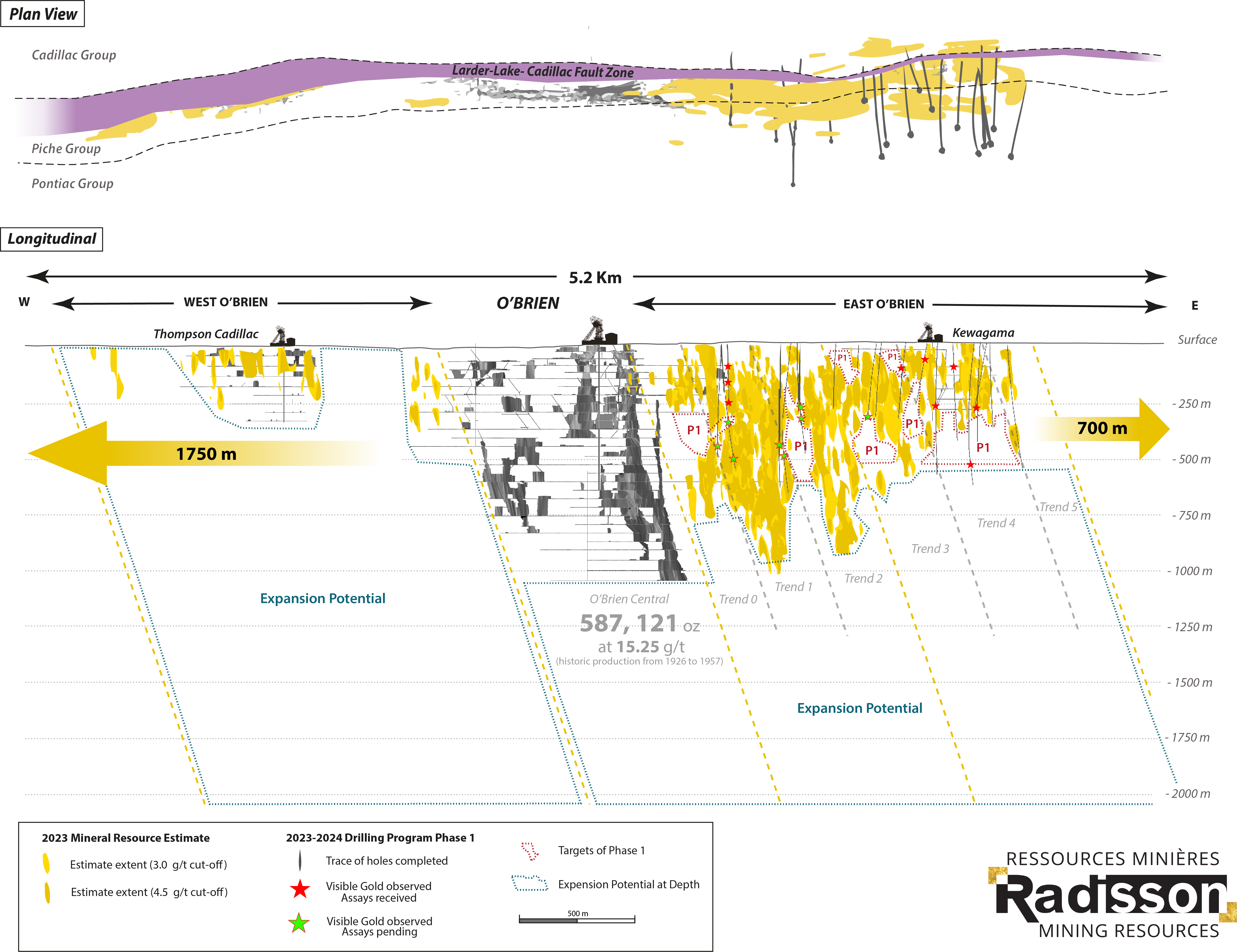Summary
Property: O'Brien 7,425.93 ha
Location: Rouyn-Noranda, Qc Canada
Ownership: 100%
Stage: Advanced exploration
Milling: Five (5) potential plants for custom milling within 75 km of the project*
The O’Brien project is located in the Abitibi region in northwestern Québec, on Trans-Canadian highway 117, about halfway between the towns of Rouyn-Noranda and Val-d’Or. Gravel roads provide easy access to the project.
The O’Brien project is located in the central part of Cadillac Township, Abitibi, in the heart of one of the most productive gold mining camps in Canada, the Cadillac Mining Camp, which boasts over 45 million ounces of gold (produced and in reserves and resources) and 3 mines presently in commercial production.
O'Brien Mineral Resource Estimate (EFFECTIVE May 2025)
| Basis of Estimate | Indicated Mineral Resources | Inferred Minreal Resources | ||||
|---|---|---|---|---|---|---|
| Tonnage (kt) | Grade (g/t Au) | Oz (koz Au) | Tonnage (kt) | Grade (g/t Au) | Oz (koz Au) | |
| MRE 2003, 4.5 g/t Au Cutoff (US$ 1,600, 1.2m minimum width, 85% Recovery) | 1,517 | 10.3 | 501 | 1,601 | 8.7 | 446 |
| MRE for PEA, 2.2 g/t Au Cutoff (US$ 2,000, 1.2m minimum width, 90% Recovery) | 2,204 | 8.2 | 582 | 6,671 | 4.4 | 932 |
| +45% | -20% | +16% | +317% | -50% | +109% | |
Historical inferred mineral resources
Charlton, 1995| Desposit | Short tons | Grade (oz/st) | Ounces |
|---|---|---|---|
| Old O'Brien mine | 539 327 | 0,21 | 110 786 |
- *These “resources” are historical in nature and should not be relied upon. It is unlikely they conform to current NI 43-101 criteria or to CIM Standards and Definitions, and they have not been verified to determine their relevance or reliability. They are included in this section for illustrative purposes only and should not be disclosed out of context.
Longitudinal section - O'Brien Project
2024
